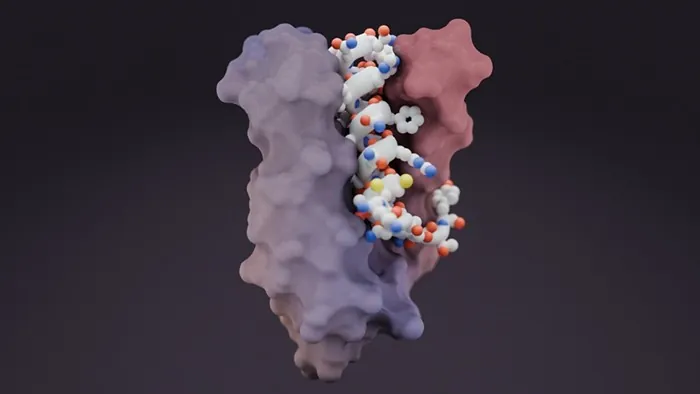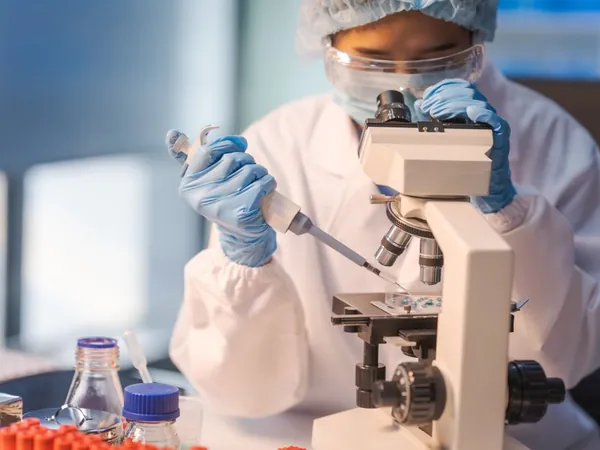
Revolutionizing Medicine: AI Unleashes Powerful Tools Against Undruggable Proteins
2025-07-18
Author: Wei Ling
The Challenge of Undruggable Proteins
Textbooks may simplify proteins to static pictures, but the reality is far more complex. While some proteins maintain stable, unchanging structures, many rely on intrinsically disordered regions that constantly shift. A groundbreaking preprint from 2024 revealed that nearly 60% of the human proteome contains at least one of these chaotic segments.
The Difficulty in Targeting Proteins
Creating drugs to target stable proteins is often straightforward—scientists usually seek a pocket in the protein's structure to attach their molecules. However, targeting proteins with disordered regions introduces a formidable challenge; their ever-changing nature makes them elusive targets.
AI Steps In to Save the Day
Thankfully, the landscape is changing, thanks to two innovative AI-driven techniques developed by researchers from the University of Washington's Institute for Protein Design. In a preprint paper, postdoctoral researcher Kejia Wu and her team detail how they harness a deep learning approach, using the RFdiffusion program. By inputting an amino acid sequence, the program generates a flexible binder that can sway and adapt alongside the target protein, facilitating a unique interaction that doesn't rely on a fixed structure.
Harnessing Flexibility for Success
This groundbreaking method excels particularly in cases where the disordered protein can take on helical or strand-like conformations. As David Baker, the principal investigator, notes, this flexibility allows researchers to mimic interactions typically observed in more stable proteins.
Introducing the 'Logos' Technique
Building on this earlier work, a recent study published in the journal Science introduced the innovative 'logos' technique. This approach takes a different path, creating binders that form their own accommodating pockets for target proteins that resist traditional helical or strand structures. Baker explains that in these scenarios, modeling the disordered protein as an extended chain yields promising results.
A New Era for Drug Discovery
Given the prevalence of disordered proteins, these new techniques could revolutionize the way researchers approach drug discovery, potentially targeting an array of proteins implicated in serious conditions such as cancer and genetic disorders. Wu emphasizes this breakthrough's importance, especially in the context of neurodegenerative diseases, which are becoming increasingly common as populations age. For example, targeting the disordered protein tau, known for its role in Alzheimer's disease, could provide a new avenue for disrupting its harmful aggregation.
The Future is Bright for AI in Medicine
As AI technology continues to evolve, its potential to tackle previously undruggable proteins opens a captivating frontier in medical research. With these advancements, we might not just treat diseases more effectively but also better understand the intricate workings of proteins that are fundamental to human health.






 Brasil (PT)
Brasil (PT)
 Canada (EN)
Canada (EN)
 Chile (ES)
Chile (ES)
 Česko (CS)
Česko (CS)
 대한민국 (KO)
대한민국 (KO)
 España (ES)
España (ES)
 France (FR)
France (FR)
 Hong Kong (EN)
Hong Kong (EN)
 Italia (IT)
Italia (IT)
 日本 (JA)
日本 (JA)
 Magyarország (HU)
Magyarország (HU)
 Norge (NO)
Norge (NO)
 Polska (PL)
Polska (PL)
 Schweiz (DE)
Schweiz (DE)
 Singapore (EN)
Singapore (EN)
 Sverige (SV)
Sverige (SV)
 Suomi (FI)
Suomi (FI)
 Türkiye (TR)
Türkiye (TR)
 الإمارات العربية المتحدة (AR)
الإمارات العربية المتحدة (AR)